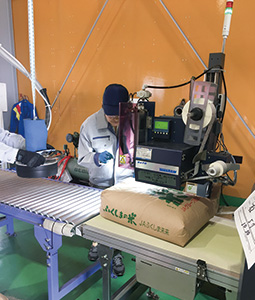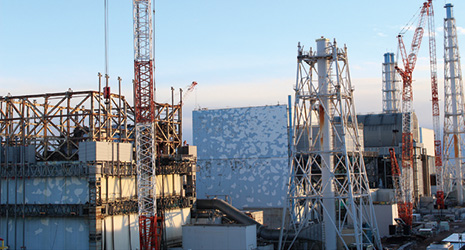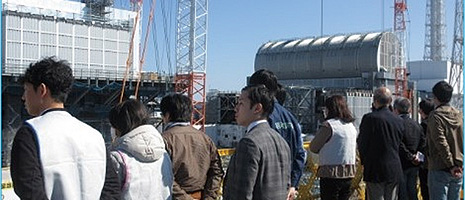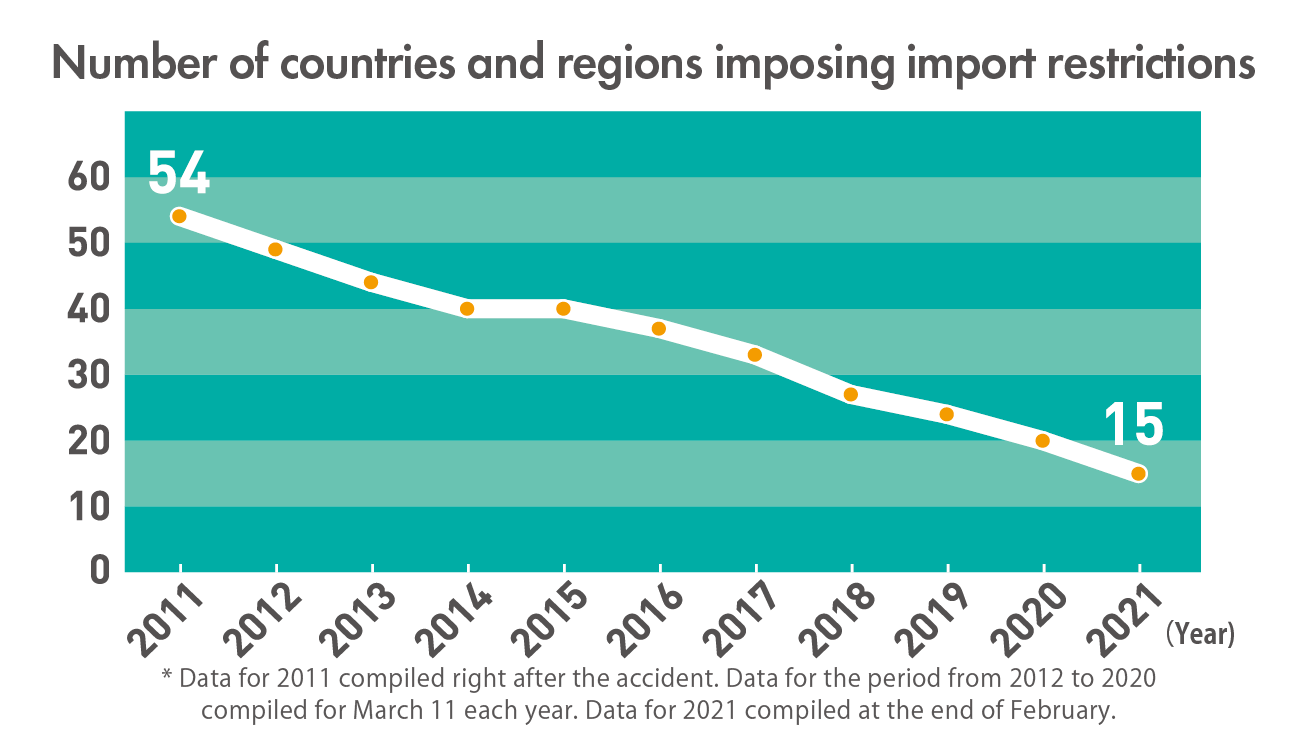INDEX

Rice being inspected for radioactive materials. Fukushima Prefecture ensures the safety of foods distributed on the market by inspecting for radioactive materials.
March 2021
Ten Years after the Great East Japan Earthquake: Recovery from the Nuclear Power Station Accident

In Fukushima Prefecture, where ten years has passed since the Great East Japan Earthquake, the decommissioning of TEPCO (Tokyo Electric Power Company)’s Fukushima Daiichi Nuclear Power Station, the return of local residents to their homes in the surrounding areas and the reconstruction of industries are steadily progressing.

On March 11, 2011, a magnitude 9.0 earthquake occurred off the Pacific coast of the Tohoku region of northeast Japan. The massive earthquake was followed by a devastating tsunami that struck the Pacific coast of Tohoku and the neighboring Kanto region further south. TEPCO’s Fukushima Daiichi Nuclear Power Station lost all power sources, which led to the loss of stable “cooling down” functions. As a result, the reactor cores were damaged and radioactive materials were released. Immediately after the accident, an evacuation order was issued to residents in twelve municipalities surrounding the Fukushima Daiichi Nuclear Power Station and approximately 160,000 people (including earthquake evacuees) evacuated to places not only within Fukushima Prefecture but also across Japan.
The Decommissioning of the Fukushima Daiichi Nuclear Power Station
At the Fukushima Daiichi Nuclear Power Station, an array of measures including actions to cool the reactors were taken immediately after the accidents. As a result, in December of 2011, the reactors achieved “cold shutdown,” a condition in which the temperature of the water within the reactor is sufficiently low and release of radioactive materials to the air is significantly suppressed. Later, the government decided to decommission the power station. Placing safety as the top priority, the decommissioning work is being carried out based on the “Mid-and-Long-Term Roadmap towards the Decommissioning of TEPCO’s Fukushima Daiichi Nuclear Power Station Units 1-4,” which was formulated to target completion of decommissioning measures “30 to 40 years later.”
The decommissioning work to date has primarily involved removal of the fuel, preparation for the removal of the fuel debris (melted nuclear fuel which mixed with structural materials and solidified), and measures to deal with contaminated water. As of February 2021, around two thirds of the more than 3,000 nuclear fuel rods have been removed from the spent fuel pools of Units 1-4, the location of the accident, using remote-controlled robotic systems. In 2019, researchers operated a robotic arm to touch a part of the fuel debris and confirmed that the fuel debris is in a condition to be moved. Further research and development of technologies for the retrieval of fuel debris, which is the most challenging step in the decommissioning process, are also under way.
There has also been progress in reducing and decontaminating the radioactive contaminated water generated by cooling fuel debris. The influence of radiation emitted from the nuclear power station, including that attributable to contaminated water, has been significantly reduced. The contaminated water generated by the power station in 2020 was one quarter of what it was in 2013.
One of the challenges being faced in the decommissioning process is the handling of some 1.2 million tons of ALPS-treated water that remains after contaminated water is purified with the Advanced Liquid Processing System (ALPS). With review by the International Atomic Energy Agency (IAEA), certain methods for disposing of the ALPS-treated water that do not have a scientific influence on people’s livelihoods and are in compliance with regulatory restrictions regarding radioactive materials have been proposed. The government is carefully examining methods for disposing of the ALPS-treated water with consideration to public concerns about reputational damage not based on scientific grounds that may be caused by the disposition.

Regional Revitalization
As a result of decontamination efforts and recovery of the infrastructure necessary for people’s lives, the evacuation order for twelve municipalities in Fukushima Prefecture has been lifted in all areas in five municipalities. The order has also been lifted in the other seven municipalities except in certain areas. (The population in areas still under the evacuation order is 27% what it was immediately after the order was issued.) The return of residents to their homes and reconstruction of the region have begun in earnest. The number of evacuees has decreased to approximately 28,000 from approximately 160,000 immediately following the power station accident.
As the return and re-start of businesses affected by the disaster have begun, the initiatives aiming to create new local industries have also made progress. For example, Fukushima is promoting the aggregation of cutting-edge technologies in such fields as robotics and energy under the Fukushima Innovation Coast Framework. In March 2020, the Fukushima Hydrogen Energy Research Field, a 10MW-class hydrogen production facility, the world’s largest class, was completed. The hydrogen produced at this facility will be used to fuel the cauldron of the Tokyo 2020 Olympic and Paralympic Games.
As for agricultural, forestry and fishery products produced in Fukushima, food safety has been secured by the establishment of a strict inspection system for radioactive materials. The number of countries and regions imposing import restrictions on food products from Japan in the wake of the nuclear power station accident has come down to fifteen from fifty-four right after the accident. The government continues to publicize scientific knowledge about radioactivity and information about the safety of the region’s agricultural, forestry and fishery products.
Fukushima is making great strides toward reconstruction and recovery. International technological cooperation to achieve decommissioning, revitalization of the local economy through consumption and tourism, and more widespread understanding of the current situation in Fukushima will lead to further recovery.


